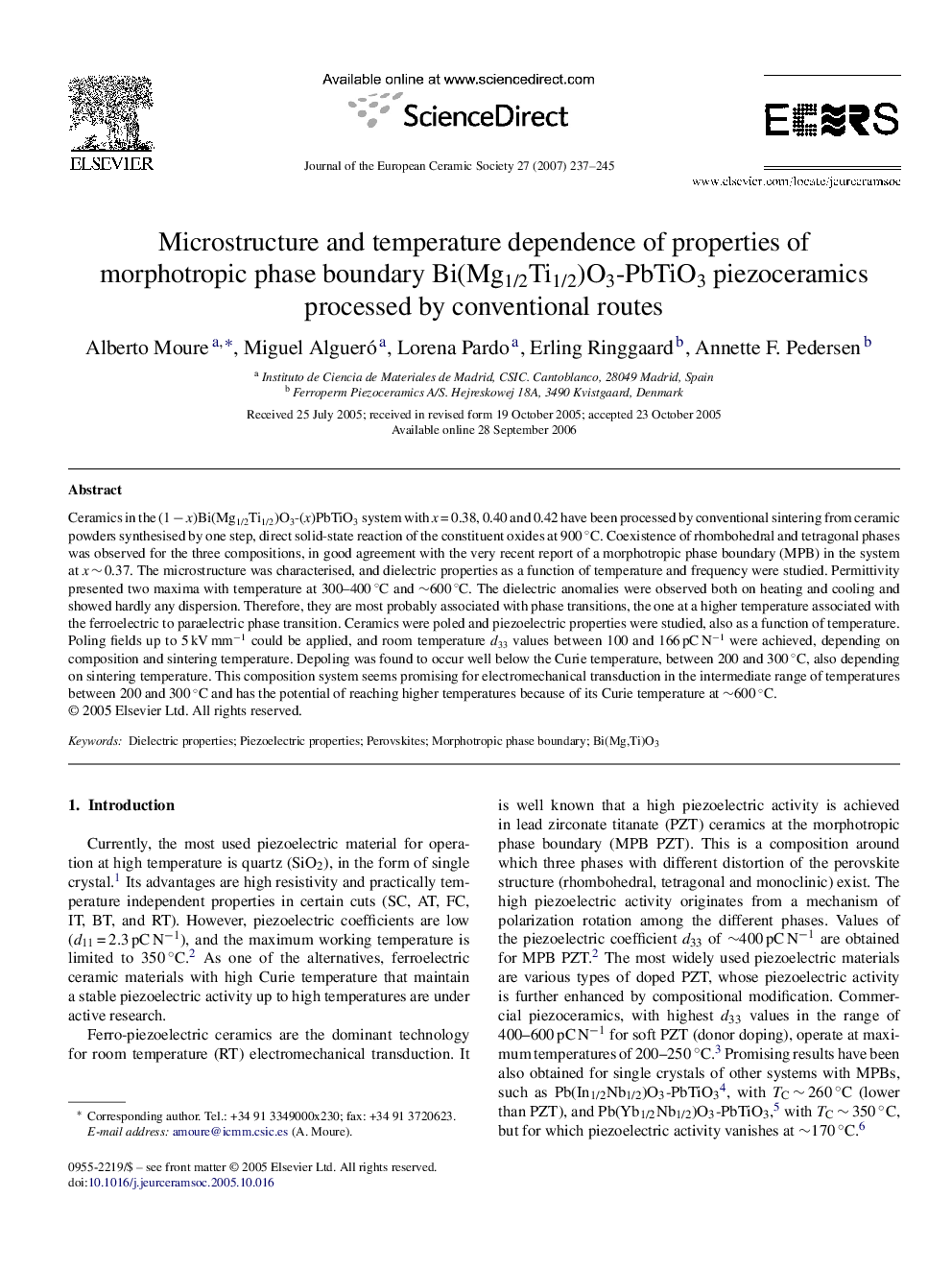| کد مقاله | کد نشریه | سال انتشار | مقاله انگلیسی | نسخه تمام متن |
|---|---|---|---|---|
| 1476973 | 991168 | 2007 | 9 صفحه PDF | دانلود رایگان |

Ceramics in the (1 − x)Bi(Mg1/2Ti1/2)O3-(x)PbTiO3 system with x = 0.38, 0.40 and 0.42 have been processed by conventional sintering from ceramic powders synthesised by one step, direct solid-state reaction of the constituent oxides at 900 °C. Coexistence of rhombohedral and tetragonal phases was observed for the three compositions, in good agreement with the very recent report of a morphotropic phase boundary (MPB) in the system at x ∼ 0.37. The microstructure was characterised, and dielectric properties as a function of temperature and frequency were studied. Permittivity presented two maxima with temperature at 300–400 °C and ∼600 °C. The dielectric anomalies were observed both on heating and cooling and showed hardly any dispersion. Therefore, they are most probably associated with phase transitions, the one at a higher temperature associated with the ferroelectric to paraelectric phase transition. Ceramics were poled and piezoelectric properties were studied, also as a function of temperature. Poling fields up to 5 kV mm−1 could be applied, and room temperature d33 values between 100 and 166 pC N−1 were achieved, depending on composition and sintering temperature. Depoling was found to occur well below the Curie temperature, between 200 and 300 °C, also depending on sintering temperature. This composition system seems promising for electromechanical transduction in the intermediate range of temperatures between 200 and 300 °C and has the potential of reaching higher temperatures because of its Curie temperature at ∼600 °C.
Journal: Journal of the European Ceramic Society - Volume 27, Issue 1, 2007, Pages 237–245